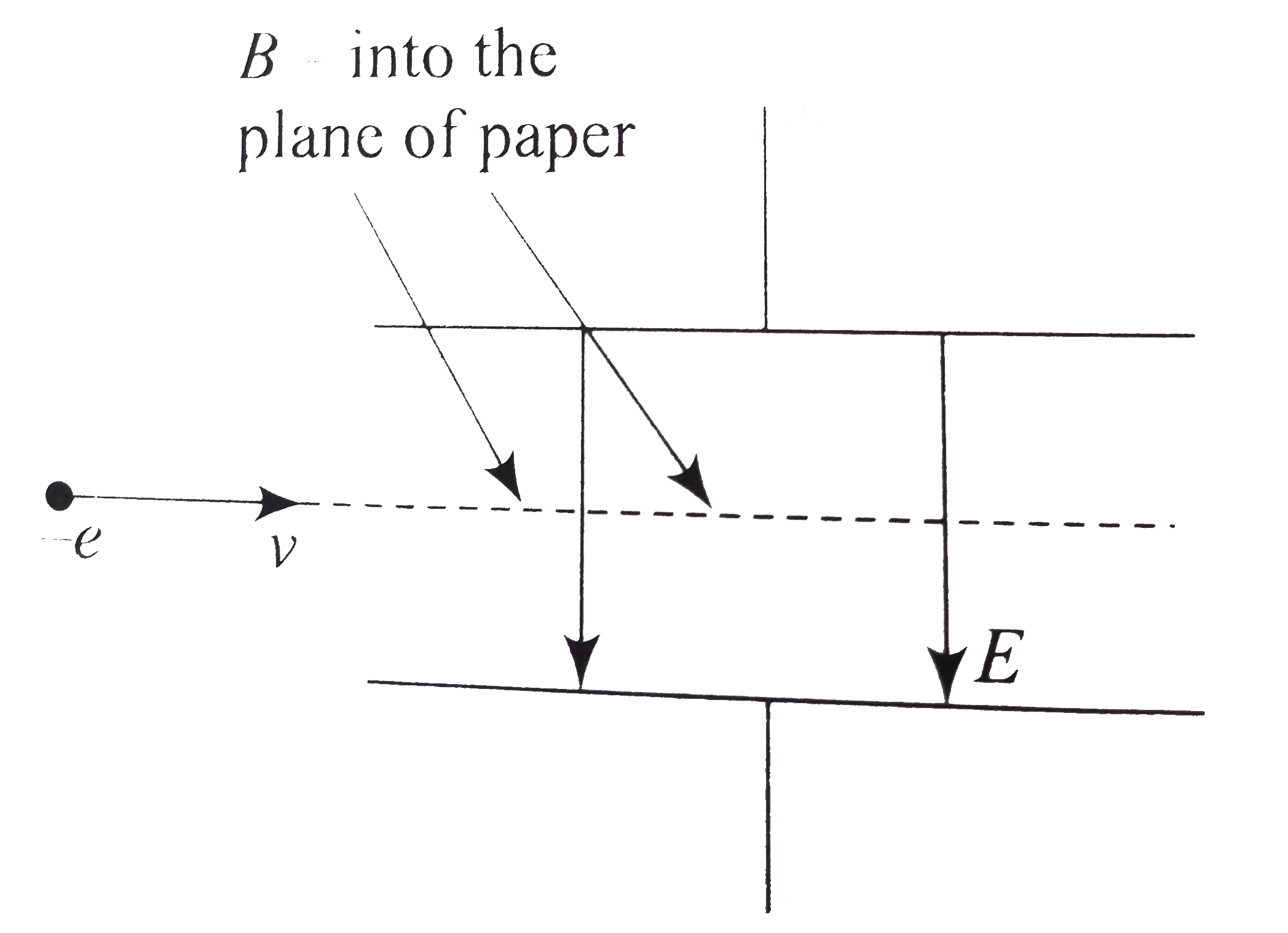A beam of electrons passes undeflected through uniformly perpendicular electric and magnetic fields. If the electric field is switched off, and the same magnetic field is maintained then the electrons move:
in an elliptical orbit
in acircular orbit
along aparobolic path
along a straight line
The correct Answer is:b
To solve the problem, we need to analyze the motion of electrons in the presence of electric and magnetic fields, and how their motion changes when the electric field is switched off.
1. Understanding the Initial Condition:
- A beam of electrons is moving through perpendicular electric (E) and magnetic (B) fields. The forces acting on the electrons are balanced, resulting in no deflection.
- The electric force (F_E) acting on the electrons is given by FE=qE (where q is the charge of the electron).
- The magnetic force (F_B) acting on the electrons is given by FB=qvB (where v is the velocity of the electrons).
2. Condition for No Deflection:
- For the electrons to pass undeflected, the electric force must equal the magnetic force:
qE=qvB
- This simplifies to:
E=vB
- This means the electric field strength (E) is equal to the product of the velocity of the electrons (v) and the magnetic field strength (B).
3. Switching Off the Electric Field:
- When the electric field is switched off, only the magnetic field remains. The electrons are now only influenced by the magnetic force.
4. Effect of the Magnetic Field on Electrons:
- The magnetic force acts perpendicular to the velocity of the electrons. According to the right-hand rule (or left-hand rule for negative charges), this force will cause the electrons to move in a circular path.
- The direction of the magnetic force on the electrons will cause them to experience centripetal acceleration, leading to circular motion.
5. Conclusion:
- Since the electric field is switched off and the magnetic field is maintained, the electrons will move in a circular orbit due to the magnetic force acting on them.
Final Answer:
The electrons will move in a circular orbit.
- A beam of electrons is moving through perpendicular electric (E) and magnetic (B) fields. The forces acting on the electrons are balanced, resulting in no deflection.
- The electric force (F_E) acting on the electrons is given by FE=qE (where q is the charge of the electron).
- The magnetic force (F_B) acting on the electrons is given by FB=qvB (where v is the velocity of the electrons).
- For the electrons to pass undeflected, the electric force must equal the magnetic force:
qE=qvB
- This simplifies to:
E=vB
- This means the electric field strength (E) is equal to the product of the velocity of the electrons (v) and the magnetic field strength (B).
- When the electric field is switched off, only the magnetic field remains. The electrons are now only influenced by the magnetic force.
- The magnetic force acts perpendicular to the velocity of the electrons. According to the right-hand rule (or left-hand rule for negative charges), this force will cause the electrons to move in a circular path.
- The direction of the magnetic force on the electrons will cause them to experience centripetal acceleration, leading to circular motion.
- Since the electric field is switched off and the magnetic field is maintained, the electrons will move in a circular orbit due to the magnetic force acting on them.
The electrons will move in a circular orbit.
Similar Questions
Knowledge Check
A moving electron enters a uniform and perpendicular magnetic field. Inside the magnetic field, the electron travels along :
Aa straight lineBa parabolaCa circleDa hyperbola
A charged particle of specific charge s moves undeflected through a region of space containing mutually perpendicular and uniform electric and magnetic fields, E and B. When the field E is switched off, the particle will move in a circular path of radius
View SolutionA charged particle of specific charge s moves undeflected through a region of space containing mutually perpendicular and uniform electric and magnetic fields, E and B. When the field E is switched off, the particle will move in a circular path of radius
View SolutionA charged particle goes undeflected in a region containing electric and magnetic field. It is possible that
View SolutionElectric field induced by changing magnetic fields are
View Solution
Electrons taveling at a velocity of 2.4×106ms−1 enter a region of crossed electric and magnetic fields as shoen in Fig. If the electric field is 3.0×106 Vm and the flux density of the magnetic field is 1.5 T, the electrons upon entering the region of the crossed fields will
View SolutionWhen light propagates in vacuum there is an electric field and a magnetic field. These fields are
View SolutionIf an electron enters a magnetic field with its velocity pointing in the same direction as the magnetic field, then
View Solution
